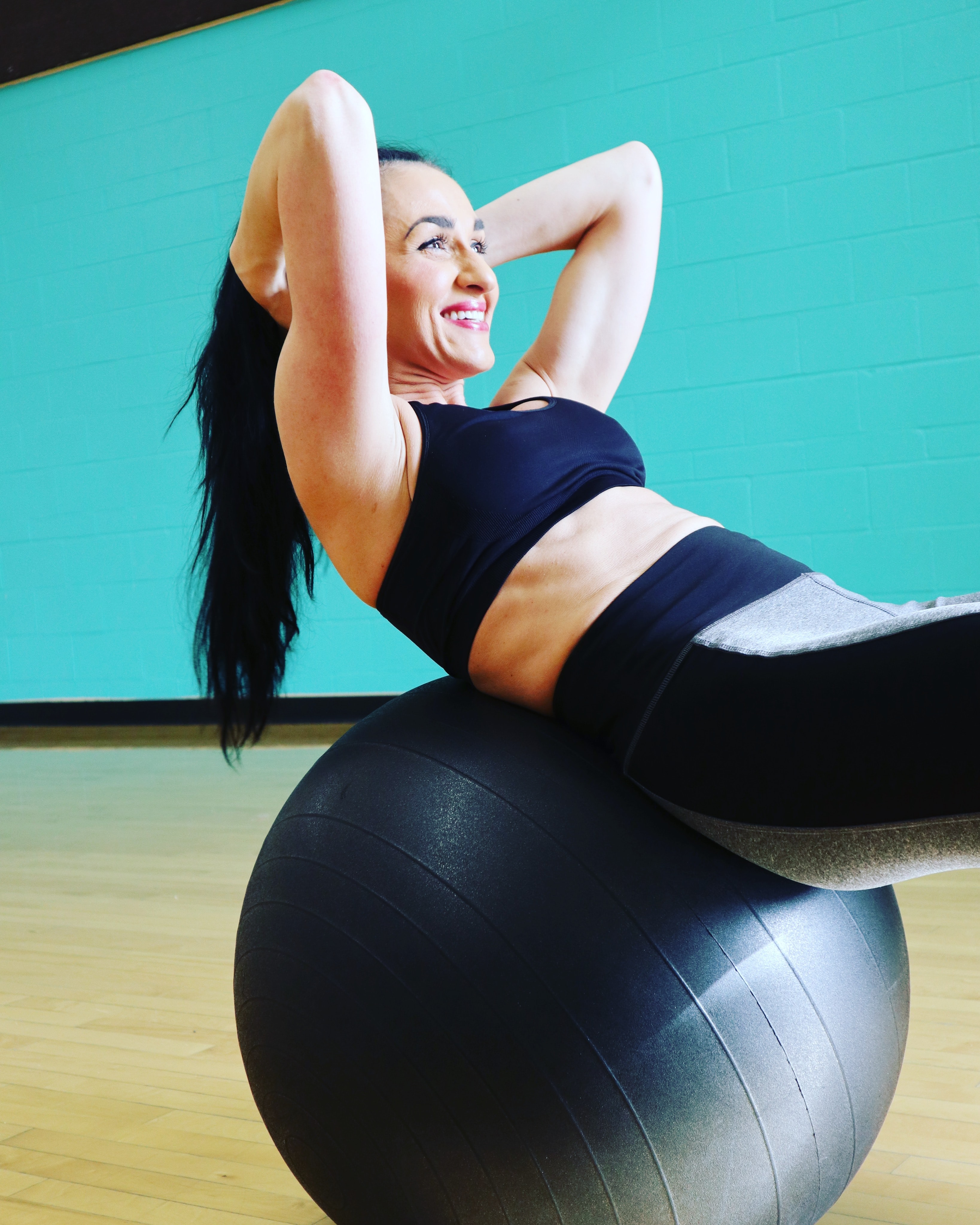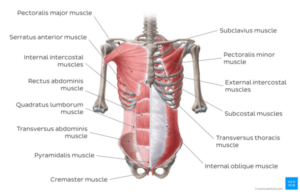
Photo by Katherine Hood on Unsplash
How do I begin to work on my core?
I have been doing all the things I have been told to do: crunches, sit ups, and minutes of planks. I don’t get it. My core is not getting better.
This is not the exception to the rule when it comes to core work. This is the rule. This is the majority of the population, including professionals. Those who don’t ask that question are natural core engagers, which in my practice, I find about 10% of us are natural core engagers.
Today, I’m going to go over some basics to help you on your quest for a truly stable and strong core. If you want to dig in deeper, you may be a great candidate to take the professional development course in The ABC Method, my nationally accredited and trademark pending course to help professionals lead in this manner, for themselves and their patrons.
What is the core and how does it work?

image by Physiopedia
As you can see, the core is complicated. And it should be. The body’s central system has to support our life forces, stabilize our entire build, and be able to move multi-directionally and multi-functionally.
Today, we’re going to hit these three:
- transverse abdominis
- internal oblique
- rectus abdominis
-
Transverse abdominis
Think of the transverse abdominis as your internal girdle. She surrounds your midsection, protects your internal organs, and supports your back. This layer of muscle tissue is deep beneath the others. We don’t think about her because she is not front and center; you don’t really see her when you pull up your shirt. And so most people don’t train her or think about her. If she is unstable, the whole system feels unstable. And this is why in my trainings and lessons, we mentally find and activate her first.
Yes, that’s a lot of meditative-style breathwork and focus. It’s not hard and fast. It’s not uber sexy. But just like other forms of mind-body wellness, doing this work to find and activate her will completely change the stability of the entire system and change how you move and how you workout.
2. Internal Oblique
The internal oblique wraps your sides. She helps you twist and turn. She is a connective piece from front to back. We often only think of her with annoying bicycle crunches, but often we need to challenge how she moves in order to better stabilize her.
Some people are oblique over-active, meaning when I try to help them activate their core muscles, the internal obliques are what turns on, and then pushes out the rectus abdominis. Be aware of this, because, as we’ll discuss next, we don’t want to push the rectus abdominis out. These muscles should work together to hug inward.
3. Rectus Abdominis
Ah the rectus abdominis. The sexy one. The indicator for many people about core strength or stability because he is front and center. Everyone sees and notices his form and shape. The good ole 6 or 8 pack.
The rectus abdominis is a miracle muscle. He supports bending from the waist and trunk mobility. He is the only muscle in the body that can flex in 2 directions, inward and outward.
Try it for a second. Pull the front part of your abdominal wall in. Push the front part of your abdominal wall out.
There are reasons for this ultimate mobility of this muscle, but please remember that he grows the way you train him. A lot of people have developed habits of pushing this muscle out, during movement, or during strength training. The result is a strong but pushed out (tortoise shell) belly. Unfortunately, this is also an unstable belly because it is not properly working with the other muscles of the core.
A stable and strong rectus abdominis hugs inward.
Now you know some of the big players in your quest for a strong and stable core.
The next step is stabilization exercises that are mindful. I know, I know, it’s not the sexy sit ups and planks you did before. But trust me. Bang for your buck.
I encourage you first to work on your ABC’s and then to start some basic stability exercises. I run a class called “Core Stable” over on my class page. Check it out! These seemingly simple movements can change everything.